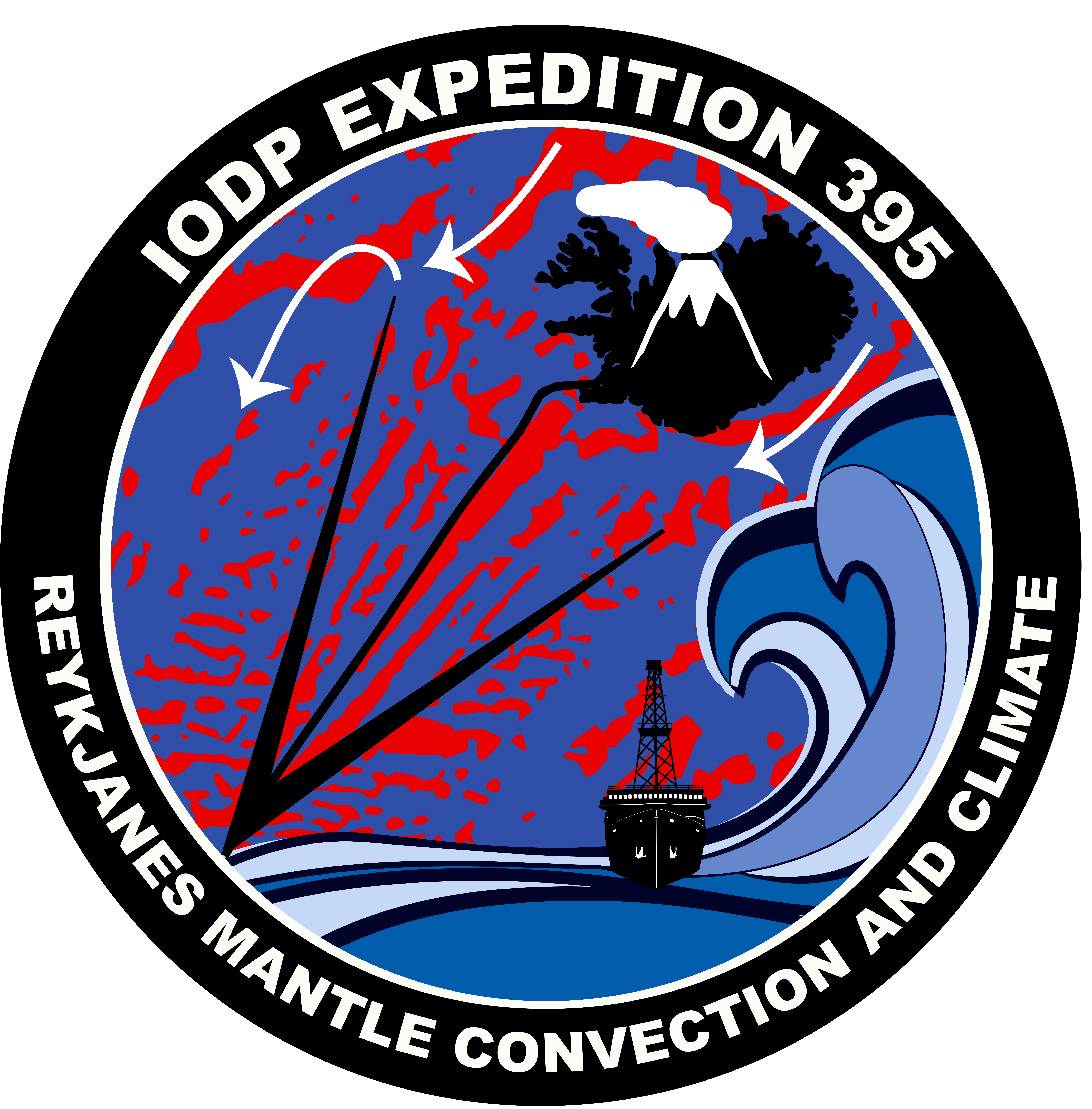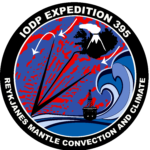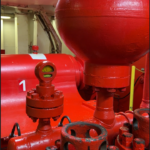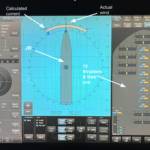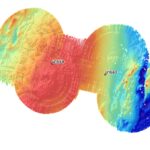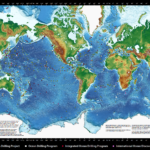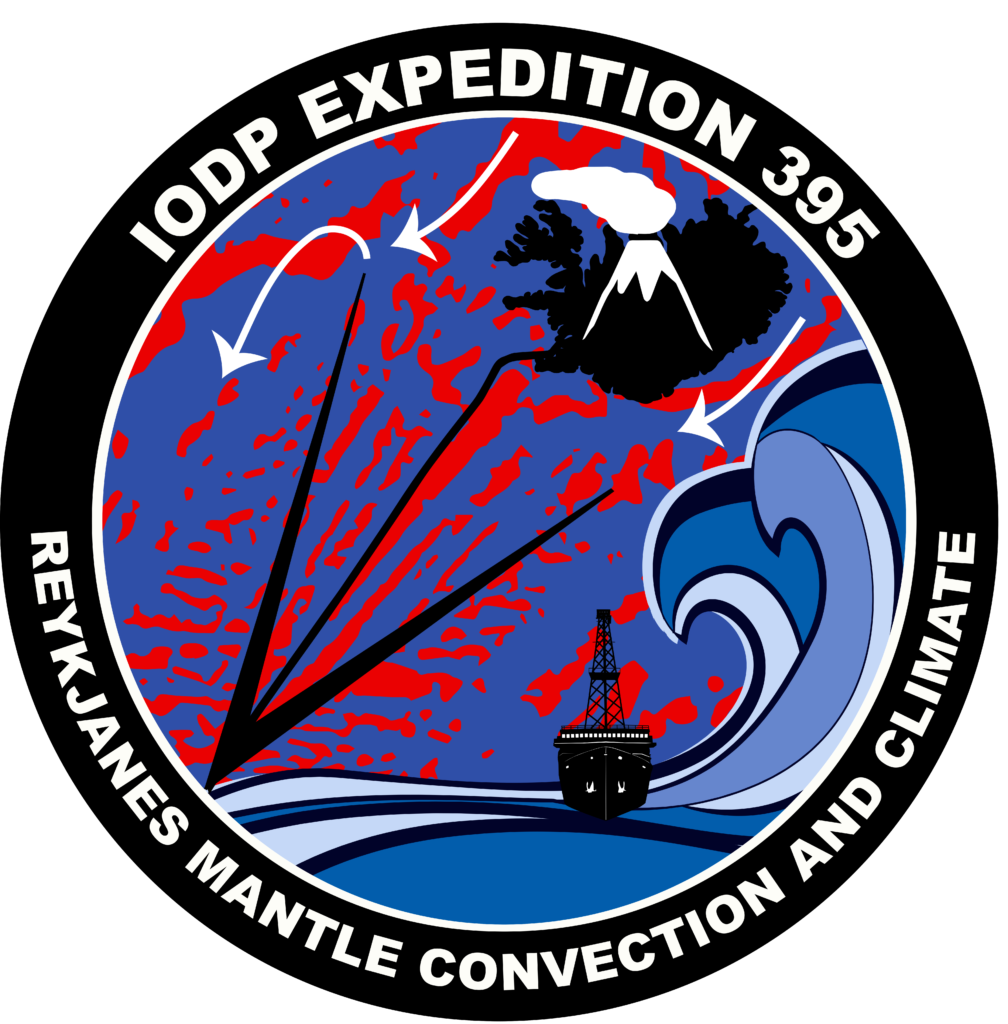
Reykjanes Mantle Convection and Climate
If you look at a bathymetric map (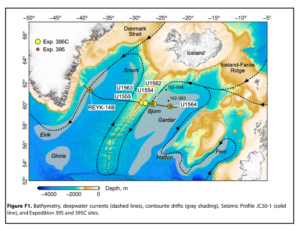 a map of the sea floor) you may notice a V-shaped pattern surrounding the Mid-Atlantic Ridge just south of Iceland. The formation of these features has been a point of debate between scientists for decades and the scientists on board the JR’s Expedition 395 are determined to solve this and other puzzles.
a map of the sea floor) you may notice a V-shaped pattern surrounding the Mid-Atlantic Ridge just south of Iceland. The formation of these features has been a point of debate between scientists for decades and the scientists on board the JR’s Expedition 395 are determined to solve this and other puzzles.
Expedition 395 scientists are embarking on a groundbreaking expedition to continue their study of the interaction between the Icelandic mantle plume and the Mid-Atlantic Ridge. Positioned over the mantle plume, the Reykjanes Ridge is an ideal location to explore mantle dynamics, crustal accretion, paleoceanography, and climate. The second of two expeditions, 395 has been years in the making. The cores from Expedition 395 will complement cores taken on Expedition 395C which embarked in 2021 (during the Covid-19 Pandemic) with only one scientist aboard!
The expedition plans to recover sedimentary and basaltic cores by penetrating ~130 m into the igneous seafloor at sites adjacent to the Reykjanes Ridge (figure 1). Expedition 395 has three primary objectives; (1) to determine the origin of the unusual but characteristic V-shaped Ridges (VSR) and V-shaped Troughs (VST) which are visible on bathymetric maps of the North Atlantic, (2) to test hypotheses about the hot mantle plume that exists under Iceland (much like the plume that exists under Hawaii) and how its changes through time are cyclical and affect crustal formation and the deep circulation of the North Atlantic Ocean, and (3) to gather data about how hydrothermal fluid chemistry varies with the age and the morphology of crustal rock as well as with the overlaying sediment thickness.
Core samples will provide clues to the expansion and contraction of the Icelandic plume which may influence how the deep ocean circulation in the North Atlantic has varied over the last 33 million years. The changes in plume behavior cause uplift and subsidence of the Iceland-Faroe Ridge and the Denmark Strait, which, in turn, control deep water circulation from the Arctic Ocean. In addition to oceanic circulation, it is possible that the hot pulses from this mantle plume also lead to the formation of VSRs and VSTs. The idea that this thermal pulsing of the Iceland plume causes the formation of the VSRs and VSTs will be tested against alternative hypotheses involving propagating rifts and buoyant mantle upwelling. Four of the coring sites intersect VSR/VST pairs, one of which coincides with the Björn drift. A fifth site is located over a 32.4 million-year-old oceanic crust that is devoid of V-shaped features. This site was chosen because it intersects the Oligocene–Miocene sediments of Gardar drift and can give scientists clues to how the ocean currents here have changed through time.
The research team will use the paleoclimate records contained in rapidly accumulated sediments of contourite drifts, such as the Bjorn and Gardar Drifts, in the region. The accumulation rate can be seen in the thickness and composition of the sediment bands so can be used as a proxy, or indicator, for the changing current strength over millions of years. These changes are affected by the presence of oceanic gateways such as the Greenland-Scotland Ridge. These sediments will also provide fossil evidence for climatic events including Pliocene warmth, the onset of Northern Hemisphere glaciation, and abrupt Late Pleistocene climate change.
The recovered sediments and basalts from Expedition 395 will provide a major advance in the understanding of mantle dynamics and how it is linked to the changes in Earth’s interior, oceans, and climate. By exploring the relationships between deep Earth processes, ocean circulation, and climate, the research team hopes to shed light on the complex interplay between these fundamental components of Earth.
